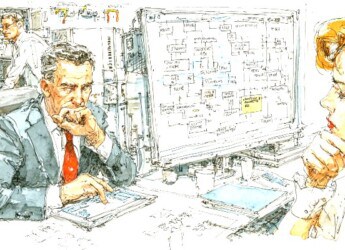Editor’s Note: The rapid acceleration of technological innovation has long been celebrated for its monumental contributions to society. However, as our awareness of the environmental consequences of unchecked development grows, the information technology (IT) sector finds itself at a pivotal crossroads. “From Code to Carbon: The IT Industry’s Sustainable Transformation” explores this critical juncture, highlighting the industry’s shift towards sustainable practices. With a focus on major tech entities like Amazon Web Services, Azure, and Google Cloud, the article delves into the burgeoning field of carbon accounting and management, powered by advancements from startups such as Dynatrace Carbon Impact. It presents a compelling narrative that not only underscores the urgent need for the IT industry to align its operations with environmental goals but also showcases the potential for technology to serve as a catalyst for ecological stewardship. For professionals in cybersecurity, information governance, and eDiscovery, this piece offers valuable insights into the evolving landscape of sustainable tech and its implications for corporate responsibility, regulatory compliance, and the pursuit of net-zero emissions objectives.
Content Assessment: From Code to Carbon: The IT Industry's Sustainable Transformation
Information - 92%
Insight - 90%
Relevance - 88%
Objectivity - 90%
Authority - 88%
90%
Good
A short percentage-based assessment of the qualitative benefit expressed as a percentage of positive reception of the recent article from ComplexDiscovery OÜ titled, "From Code to Carbon: The IT Industry's Sustainable Transformation."
Industry News – Sustainable Development Beat
From Code to Carbon: The IT Industry’s Sustainable Transformation
ComplexDiscovery Staff
In a world hyper-conscious about carbon emissions, tech entities like Amazon Web Services, Azure, and Google Cloud face increasing scrutiny over the environmental impact of their services. Aided by breakthroughs from startups like Dynatrace Carbon Impact, the IT sector is now armed with advanced carbon accounting and management tools, shifting the narrative from mere awareness to actionable sustainability. The latest surveys, including those conducted by Accenture and the IBM Institute for Business Value, reveal a growing demand for integrated strategies to align business performance with environmental goals, yet actionable responses lag, hinting at a struggle to balance progress with preservation.
VentureBeat’s sponsored content sheds light on this critical issue, detailing how carbon footprint calculators and software solutions, like those built in coalition with SDIA and Cloud Carbon Footprint initiatives, empower organizations to transition to greener practices. This tech revolution serves as a defense against ecological degradation and a tool to optimize operational efficiency. According to Annette Zimmerman, VP analyst at Gartner, sustainability tech can lead to up to 55% energy savings, a staggering figure that speaks to both the urgency and the magnitude of potential gains.
The intersection of sustainable tech and corporate responsibility is evident in recent efforts by companies operating eco-friendly data centers, optimizing algorithms, and engaging in responsible e-waste management. A notable example comes from Mexico, where a cloud-based platform enables an international baked goods company to record, analyze, and reduce their Scope 1 and 2 emissions across numerous facilities and delivery routes. Such initiatives point to a significant shift in the digital ecosystem, one where the once-wide chasm between tech advancement and environmental stewardship begins to close.
Furthermore, companies are now showing that leveraging tools for environmental, social, and governance (ESG) monitoring and AI-powered analysis can yield better business performance. Data insights lead to not just ESG compliance but enhanced business strategies, propelling organizations towards their net-zero emissions goals while benefitting the bottom line. Yet, the path is not without hurdles; real-time data, a unified approach to carbon tracking, and regulatory pressures, particularly from bodies like the EU with the Digital Green Deal, pose challenges to be navigated.
WS Transportation’s use of AI in reducing CO2 emissions through a digital freight marketplace and Trelleborg Group’s energy procurement platform underscore the transformative potential of tech solutions in making businesses more sustainable. Sustainable development is further bolstered by adopting electric vehicles and greentech innovations like Slack, Jira, and collaboration with organizations like Channel Futures and Microsoft.
The commitment is clear, as Martin Gilhooley, general manager of WS Transportation, articulates the tangible environmental and financial benefits of integrating new technologies. His company’s AI application led to a 30% reduction in empty running and approximately 190,000 fewer road miles yearly, quantifying the substantial impact of embracing Greentech.
In an architectural parallel, developers proficient in green coding techniques and environmentally conscious software approaches have the power to shape the future of the IT sector. Custom software solutions focusing on green technology not only reduce the carbon footprint of tech enterprises but also signal an industry ripe for change. This holistic approach to sustainable software development can play a crucial role in saving our planet while the narrative of tech’s impact shifts from one of consumption to contribution.
News Sources
- Seamless Carbon Data Management Key to Net Zero Goals
- Innovating With Green Technology in Software Development
- Three ways sustainability tech is helping businesses meet climate goals
- AI Industry Takes Steps to Address Environmental Concerns
- Carbon footprint: The important role DevOps plays in sustainable computing
Assisted by GAI and LLM Technologies
Additional Reading
- Global Leaders from G7 Champion Ethical AI Deployment for Sustainable Development
- Surging Demand for Generative AI Clashes with Global GPU Shortage and Power Challenges
Source: ComplexDiscovery OÜ



























